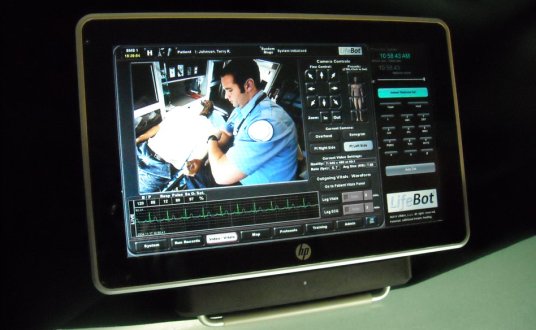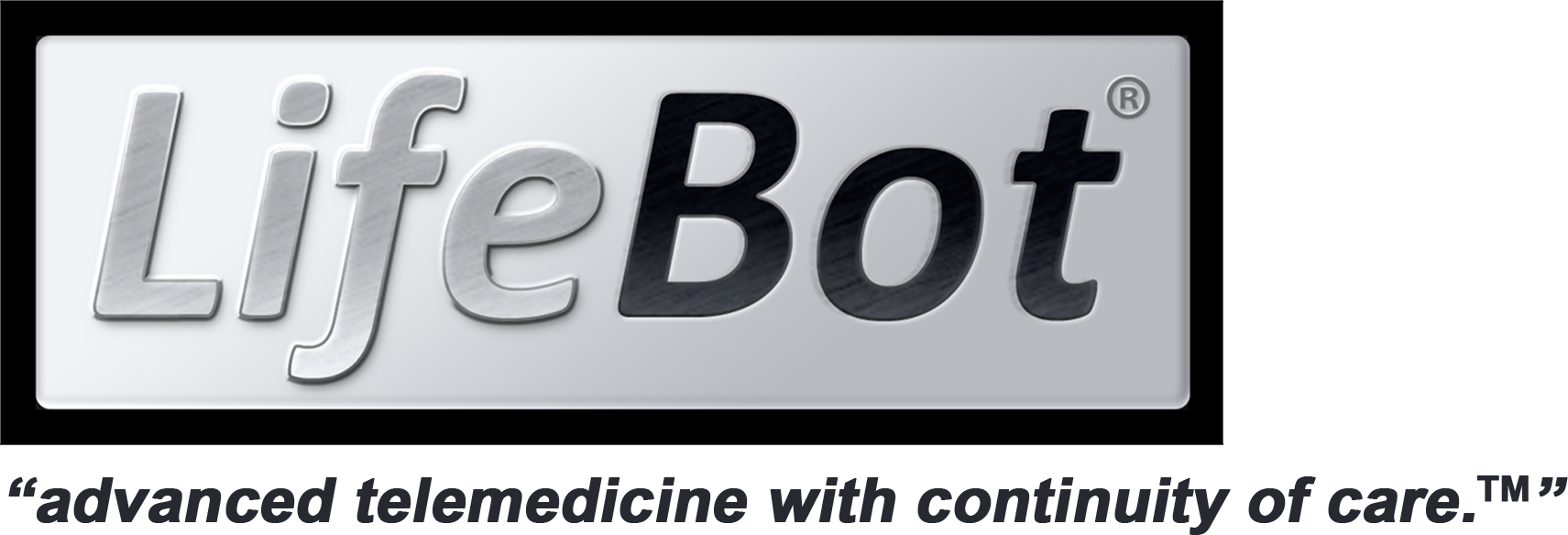 LifeBot® announced today it has released a preview of its 1.5 pound LifeBot® Slate tablet based EMS emergency telemedicine system that integrates DREAMStm, the $14 million advanced EMS ambulance telemedicine and disaster management system developed by Texas A&M, UTHealth, and the U.S. Department of the Army.
LifeBot® announced today it has released a preview of its 1.5 pound LifeBot® Slate tablet based EMS emergency telemedicine system that integrates DREAMStm, the $14 million advanced EMS ambulance telemedicine and disaster management system developed by Texas A&M, UTHealth, and the U.S. Department of the Army.
Phoenix, AZ, USA January 29, 2011: LifeBot, LLC announced today a preview of the most powerful portable light-weight tablet for real-time management of critical patients located in remote emergency rooms, ambulances, satellite facilities or intensive care units. At only 1.5 pounds weight the LifeBot® Slate enables unprecedented portability and functionality in a mobile healthcare solution that brings high definition interactive voice and video communications that facilitate access to patients and physicians in real-time no matter where they are located. This system also allows for live transmission of critical patient physiological data using LifeBot® DREAMStm software developed with U.S. Army Materiel Command, Texas A&M, and UTHealth Science Center at Houston.
The LifeBot® Slate PC tablet (similar to, but smaller and more powerful than an Apple iPad) may be used to remotely connect to other LifeBot® DREAMStm systems including telemedicine carts and ambulances. This tablet is also based on Microsoft Windows 7, so it is accepted by DoD and meets most administrative compliance for use in large institutions The LifeBot® Slate absolutely revolutionizes speed of care by enabling any paramedic, neurologist, trauma surgeon, emergency medical specialist to obtain immediate telepresence or remote video, voice and data connections using a simple 1.5 pound portable battery operated PC computer tablet solution.
In an article titled, "New device integrates digital data for EMS" by Dan White, he comments, "The LifeBot® physical package is surprising ergonomic, and somehow intuitive. It feels natural, like grabbing the steering wheel of a car. The LifeBot® only weighs 1.5 pounds, and it is a little smaller form factor than an Apple I-Pad." and, “LifeBot has the potential to redistribute hundreds if not thousands of man-hours. Instead of taking two minutes to talk through a patient report, which is typically incomplete, you could see everything almost instantly. On patients with less than critical injuries, this feature will save a lot of wasted time."
In another article entitled, "Interview: Roger Lee Heath´s LifeBot and Super Ambulances" by Neil Versel, he commented, "In a Super Ambulance, paramedics wear cameras on their head and carry the LifeBot system on 1.5-pound HP slate computers. The touch screen allows remote physicians to draw "play-by-play" on the screen to help the EMT provide better care. Other cameras mounted in the ambulance can be controlled by physicians in the trauma center."
Scientists at Texas A&M University, developers of the DREAMStm system, have tested the LifeBot® Slate and stated, "The Slate is a great platform! It seems to be a very good interface. It is a great platform for the DREAMStm application!".
For those deploying interoperative emergency communications, the LifeBot® Slate platform may also be used with the LifeBot® Communications Controller. This enables the Slate to be carried as a portable wireless device to perform both radio and telephone communications, including UHF, VHF, 800 MHz, 700 MHz, P25 and broadband voice, video, and data. Mr. Heath, CEO of LifeBot®, indicated, "This is yet another revolutionary aspect of this system. It means EMS and emergency coordinators can carry all their communications throughout an Emergency Department in just one hand."
|
LifeBot ® Slate Features and Benefits:
|
|
[hr]
LifeBot® CEO, Heath, indicated that the company is already quoting DREAMStm based systems, including the Slate, as a part of its product line. The company is now considering an invitation to exhibit these systems at the HIMSS Meeting in Orlando next month.
About DREAMStm:
The DREAMStm (Disaster Relief and Emergency Medical Services) digital emergency medical services (Digital EMS) program is led by famed trauma surgeon and educator, Dr. James H. “Red” Duke, Jr. Dr. Duke is professor of surgery, holder of the John B. Holmes Professorship and chief of surgery at the University of Texas Health Science Center at Houston (UTHealth), as well as medical director of Memorial Hermann Life Flight. The software, hardware, and telecommunications aspects of this program are led by Texas A&M Researcher Larry Flournoy, and Texas Engineering Experiment Station researcher James Wall, Ph.D. The digital EMS program has developed and deployed wireless video communications and combining AVL/GPS (Automatic Vehicle Location/Global Positioning System) technology and advanced software to enable ambulances and helicopters to reach the victim sooner, begin triage, diagnosis and treatment on the scene, and coordinate helicopters and ambulances to minimize transport time to the nearest appropriate facility, using continuous “live” communication with these facilities.
DREAMStm has already been successfully deployed and tested aboard “Super Ambulancestm” in multiple counties of Texas. In addition, these “Super Ambulancestm” also have aided with rescue efforts during the aftermath of the Hurricanes Katrina and Rita. DREAMStm is a tested and proven “battlefield” application.5,6,7
The development of this system was in conjunction with U.S. Army Medical Research and Materiel Command (USAMRMC) through its Telemedicine & Advanced Technology Research Center (TATRC). TATRC performs medical reconnaissance and special operations to address critical gaps that are underrepresented in DoD medical research programs. Versions of DREAMStm also include field and disaster deployable “MASH” style versions that may be dropped into combat theaters and a HMMWV 9978A2 (Humvee) prototype for in-the-field use by the U.S. Military.
About LifeBot®:
LifeBot® provides exclusive patented and military developed telemedicine solutions for emergency management of hospital-to-ambulance and hospital-to-home communications. These systems are used to send and receive live video, voice and patient vital-sign data transmissions primarily in support of heart, trauma and stroke victims in ambulances. The company´s patents focus on extension of these life-saving systems into consumer use in the home and business.
The systems are also designed for management of major crises, disasters and emergencies by hospital based and field public safety emergency professionals and for the U.S. Military in battlefield operations. We integrate next generation broadband capabilities not inherent in today´s interoperative digital radio communications so the benefits of achieving telemedicine, telehealth, and emergency preparedness objectives may all be fully realized.
The company was founded by R. Lee Heath, who is best known as the inventor businessman making possible the life-saving Automatic External Heart Defibrillator (AED) now in common use throughout the world. Mr. Heath was recommended for the Lemelson MIT Prize by American Heart Association officials and other peers. His experience spans almost four decades in the design and deployment of emergency life-support and their communications systems.
![]() download PR-Release PDF version
download PR-Release PDF version
References and Links:
- “New device integrates digital data for EMS” by Dan White
- “Interview: Roger Lee Heath´s LifeBot and Super Ambulances” by Neil Versel

